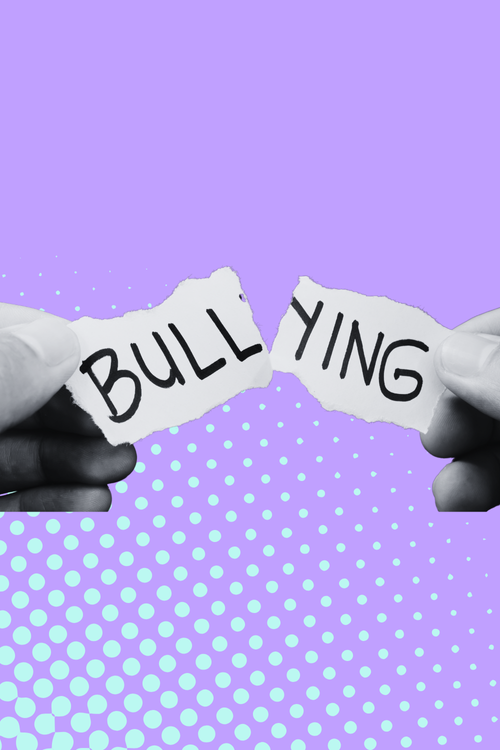Bullying is a pernicious force that can leave lasting scars, not just on the victims but on the entire workplace environment. As someone who has experienced bullying both in school and the workplace, I understand the profound impact it can have. I recall my time working in Hong Kong, where a group of colleagues treated me as if I were their servant. They even went so far as to make me deliver documents for them despite my sprained ankle. The relief I felt upon leaving that job was immense, yet it was tinged with concern for those who would replace me and endure similar mistreatment. I never spoke up, fearing the repercussions on my career, but my silence was not without consequence. It is for the quiet sufferers of workplace bullying that I write this, hoping to shed light on this pervasive issue and offer a path forward.
Signs of a Toxic Workplace with Office Bullies
Identifying a toxic workplace is the first step in addressing the issue of bullying. Bullies often operate in environments where their behavior is either overlooked or tacitly accepted. Here are some signs that your workplace may be harboring bullies:
- Exclusion and Isolation: Bullies often isolate their targets by excluding them from meetings, social gatherings, or important communications. This can lead to feelings of alienation and helplessness.
- Unreasonable Work Demands: Assigning tasks that are beyond the scope of one's role or impossible to complete within the given timeframe is a common tactic used by bullies to undermine their targets.
- Public Humiliation: Bullies may belittle or criticize their targets in front of others, damaging their reputation and self-esteem.
- Sabotage: Deliberately undermining a colleague's work by withholding information, providing incorrect data, or interfering with their tasks is another hallmark of bullying behavior.
The Psychology of a Workplace Bully
The psychology of a workplace bully is complex and multifaceted, often rooted in deep-seated insecurities and a desire for control. Workplace bullies typically exhibit a persistent pattern of mistreatment that causes physical and/or emotional harm to their targets.
Psychological Traits
Workplace bullies often display several key psychological characteristics:
- Low Emotional Intelligence (EI): Bullies often have low EI combined with high social intelligence, allowing them to manipulate others effectively while lacking empathy. This enables them to exploit social dynamics to their advantage while remaining indifferent to the harm they cause.
- Narcissistic Tendencies: Many bullies exhibit narcissistic traits, including an inflated ego, a sense of superiority, and a refusal to take responsibility for their actions. These traits drive them to seek admiration and control over others.
- Machiavellian Traits: Bullies often possess Machiavellian characteristics, involving the manipulation and exploitation of others to advance their personal agendas. They are strategic in their actions, using others as tools to achieve their goals.
- Psychopathic Tendencies: Some research suggests that a significant portion of bullying incidents are caused by individuals with psychopathic traits, who lack empathy and remorse.
Behavioral Patterns
Workplace bullies often employ specific tactics to assert dominance and control:
- "Kiss Up, Kick Down" Strategy: Bullies ingratiate themselves with superiors while intimidating subordinates, maintaining a facade of competence and loyalty to those in power.
- Instrumental Bullying: This involves using bullying as a means to achieve personal goals, such as promotions and power. Bullies see their behavior as a tool for advancement.
- Indirect Tactics: Narcissistic bullies often prefer subtle methods like withholding information, spreading gossip, and excessively monitoring others' work to undermine their targets without direct confrontation.
- Emotional Manipulation: Bullies use excessive flattery and compliments to lower others' defenses, making them more susceptible to manipulation.
Underlying Motivations
The motivations driving workplace bullies can vary:
- Fear and Insecurity: Many bullies are actually insecure individuals who use aggressive behavior to mask their own vulnerabilities. Their bullying is a defense mechanism to protect their self-image.
- Power and Control: Bullies often seek to dominate others to feel more powerful and in control of their environment. This need for control drives their aggressive behavior.
- Competitive Advantage: Some bullies use their tactics to gain an edge in the workplace, such as taking credit for others' work or sabotaging colleagues' efforts to advance their own careers.
- Lack of Self-Awareness: In some cases, bullies may not fully realize the impact of their behavior, especially if they have issues with social functioning. This lack of awareness can perpetuate their harmful actions.
Understanding the psychology of workplace bullies can help organizations better identify and address this harmful behavior, creating healthier work environments for all employees.
How to Deal with an Office Bully Without Risking Your Job
Dealing with a workplace bully can be daunting, especially when you fear for your job security. Here are some strategies to address bullying effectively:
- Document Everything: Keep a detailed record of all bullying incidents, including dates, times, locations, and any witnesses. This documentation can be invaluable if you decide to report the behavior.
- Seek Support: Confide in trusted colleagues who can offer emotional support and serve as witnesses to the bullying behavior. Having allies can bolster your confidence and provide additional evidence if needed.
- Address the Bully Directly: If you feel safe doing so, consider addressing the bully directly. Calmly and assertively explain how their behavior affects you and request that it stop. Sometimes, bullies are unaware of the impact of their actions.
- Report to HR: If the bullying persists, report it to your Human Resources department. Provide them with your documentation and any supporting evidence. HR has a responsibility to address workplace bullying and ensure a safe environment for all employees.
Support for Victims of Workplace Bullying
If you are experiencing workplace bullying, it's important to know that you are not alone and there are resources available to help you. Here are some organizations and helplines that can provide support:
United States
- Workplace Bullying Institute (WBI): The WBI offers resources, education, and advocacy for individuals experiencing workplace bullying. They provide a comprehensive understanding of workplace bullying and offer guidance on how to address it 26.
- StopBullying.gov: This government website provides information on bullying prevention and response, including resources for adults dealing with workplace bullying 27.
- Crisis Text Line: For immediate support, you can text "CONNECT" to 741741 to reach a trained crisis counselor who can provide assistance and guidance 28.
United Kingdom
- Acas (Advisory, Conciliation and Arbitration Service): Acas provides free and impartial advice on workplace rights, including guidance on dealing with bullying and harassment.
- National Bullying Helpline: This organization offers practical advice and support for individuals experiencing workplace bullying. They provide a confidential helpline service.
- SupportLine: SupportLine offers a helpline providing emotional support to individuals affected by workplace bullying and other issues. They can be reached at 01708 765200.
Sweden
- Arbetsmiljöverket (Swedish Work Environment Authority): This authority provides guidelines and support for creating a healthy and safe work environment, including addressing workplace bullying.
- Unionen: As one of the largest trade unions in Sweden, Unionen offers support and advice to its members on workplace issues, including bullying and harassment. (I'm a proud member of Unionen)
- Prevent: This organization provides resources and training for employers and employees to improve the work environment and prevent bullying.
By reaching out to these organizations, victims of workplace bullying can access the support and resources they need to address the issue and protect their well-being. Remember, taking action is a crucial step towards creating a safer and more respectful workplace for everyone.
Why Employers Should Care: The Cost of Letting Bullies Continue
Employers have a vested interest in addressing workplace bullying, as it can have significant financial and organizational repercussions:
- Decreased Productivity: Bullying creates a hostile work environment, leading to decreased productivity, poor performance, and low morale.
- High Turnover Rates: Employees who experience bullying are more likely to leave their jobs, leading to high turnover rates and increased recruitment and training costs. Research indicates that replacing an employee can cost a company up to 1.5 times the employee's annual salary.
- Legal and Financial Risks: Failing to address bullying can expose employers to legal risks, including lawsuits and reputational damage. The average cost to defend a harassment lawsuit is $250,000, with the average jury award reaching $600,000. This underscores the importance of creating a safe and respectful workplace.
In summary, addressing workplace bullying is not just a moral imperative but a strategic necessity. By fostering a culture of respect and support, organizations can enhance productivity, reduce turnover, and protect themselves from legal and financial risks. Creating a workplace where everyone feels safe and valued is essential for long-term success and employee satisfaction.

